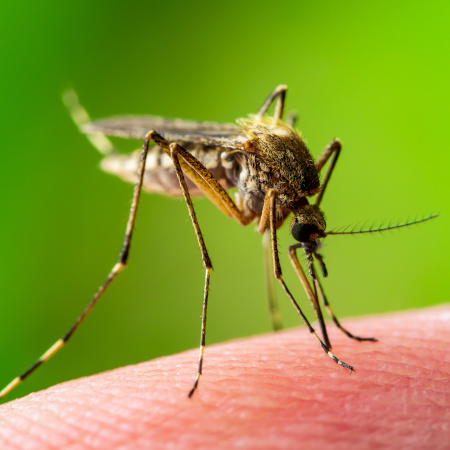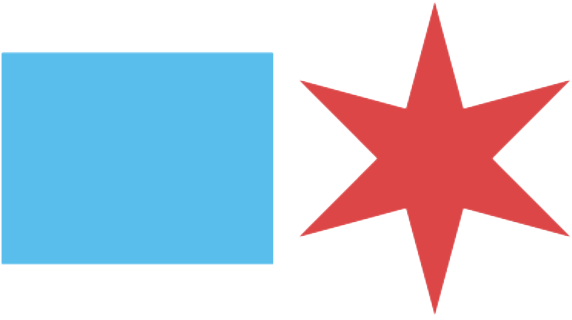West Nile Virus Surveillance

Since emerging in the U.S. in 1999, West Nile virus (WNV) has become the #1 cause of mosquito-borne disease in the United States. In Chicago, WNV is spread to people by the bite of an infected mosquito. While many people with WNV do not develop any symptoms, about 1 in 5 develop fever and flu-like illness and about 1 in 150 develop severe illness such as encephalitis (swelling of the brain). Human WNV cases are typically seen during the summer and fall seasons when mosquitoes are most active in Chicago. In 2002, Chicago established a mosquito surveillance and control program. From approximately June to October, mosquitoes are collected from traps placed throughout Chicago and tested weekly for WNV at the CDPH lab.
WNV Surveillance Dashboard
What is CDPH doing to prevent WNV?
- Treating 80,000+ catch basins, such as storm drains, with larvicide every spring to reduce the mosquito population before mosquitoes emerge
- Performing field surveillance across Chicago to trap and test mosquitoes for WNV
- Spraying to kill adult mosquitoes in localized areas based on the number of mosquitoes and proportion testing positive for WNV
- Distributing information to the public about personal protection and controlling mosquitoes indoors and outdoors
- Updating this dashboard highlighting weekly mosquito activity and testing results during the mosquito season (June–October)
About the Data
This dashboard summarizes information about mosquito surveillance in Chicago, with a focus on West Nile virus (WNV). Click the topics listed below to learn more.
- To view a specific season, use the drop-down menu and select a year.
- To view counts for a specific week from the selected year, use the slider to select a week or range of weeks. All weeks must be selected to view cumulative data. For the current year, cumulative data will be to date.
CDPH maintains about 80 mosquito traps throughout the city during June through early October. Twice weekly, mosquitoes are collected from the traps. Female Culex mosquitoes, which transmit WNV to humans in Chicago, are pooled by trap location with up to 50 mosquitoes per pool and tested via polymerase chain reaction (PCR) for WNV. Mosquito data are maintained in the Zoonotic Disease Tracker (ZDT), a CDPH developed application. Select variables, including number of mosquitoes collected and tested, pools tested, number and proportion of pools testing positive for WNV, trap type, mosquito species, season year and week from ZDT feed into the publicly available West Nile Virus (WNV) Mosquito Test Results dataset on the Chicago Data Portal. The Chicago Data Portal dataset is used to populate the visual elements of the mosquito dashboard. The dashboard is updated daily at 5:00 am from approximately June to October. Data displayed for a week may not be complete until the following Monday morning as information is collected and processed over multiple days. Data are available from 2007-present. Additional variables, such as community area, are not incorporated into the dashboard, but are available in the Chicago Data Portal dataset.
CDPH identifies, sorts, and counts all mosquitoes collected. Not all these data are represented in the dashboard. Select variables, including the number of mosquitoes collected by species, sex, year and week from ZDT feed into the publicly available Mosquito Counts dataset on the Chicago Data Portal. Currently this dataset only contains data for Aedes albopictus mosquitoes but will expand to include additional species in the future. Data are available from 2016-present and updated weekly from approximately June to October.
All data are provisional and subject to change.
Human cases include Chicago residents reported to CDPH that meet clinical and laboratory criteria for neuroinvasive or non-neuroinvasive WNV disease per the CSTE (Council for State and Territorial Epidemiologists) case definition. Counts include probable or confirmed cases. These data are updated manually as cases are verified. Source: I-NEDSS (Illinois National Electronic Disease Surveillance System) and historic records.
All data are provisional and subject to change.
- Mosquitoes collected and tested:
- The number of mosquitoes collected and tested for WNV across all traps. Only female Culex mosquitoes are tested for WNV, because they spread mosquitoes to people. Other species and males are collected but not currently included in the dashboard.
- Pools tested:
- Pools are groups of collected mosquitoes that are tested together for WNV. Pools contain no more than 50 mosquitoes
- WNV positive pool:
- A positive pool occurs when at least one mosquito infected with WNV was present in the pool.
- Week:
- The week of a mosquito season refers to the number of weeks that have passed in the year. Weeks are Sunday-Saturday and align with Morbidity and Mortality Weekly Report (MMWR) weeks used by the Centers for Disease Control and Prevention (CDC). Most years include data from weeks 23-39 but some years may have earlier or later weeks.
- Mosquito species:
- There are a number of different mosquito species found in Chicago, most of which are not capable of transmitting WNV. Culex restuans and Culex pipiens are known to transmit WNV in the area.
- Historical average:
- The average number of mosquitoes collected and tested or positive pools by week from 2007 through the year prior to the current season.
- Larvicide:
- A type of insecticide used to kill immature mosquito larvae or prevent their ability to grow into adult mosquitoes.
- Adulticide/spray:
- A type of insecticide used to kill adult mosquitoes. Liquid adulticides can be applied as a spray. CDPH applies adulticide using an ultra-low volume spray designed to kill adult mosquitoes while in flight.
- Mosquito-borne disease:
- Illness spread to people through the bite of infected mosquitoes.
- Immunocompromised:
- Having a weakened or compromised immune system which reduces a person’s ability to fight off diseases.
- Catch basin:
- Structure that holds rainwater and other runoff from paved surfaces such as roads or sidewalks.
- CSTE:
- Council of State and Territorial Epidemiologists
- I-NEDSS:
- Illinois National Electronic Disease Surveillance System
- CDPH:
- Chicago Department of Public Health
Historical West Nile Virus Reports
Beginning in July of 2025, weekly PDF reports will no longer be produced. Please refer to the above dashboard for surveillance data from 2007–present. Click below to view past reports.
2025
- 7/21/2025 - Week 29
- 7/14/2025 - Week 28
- 7/7/2025 - Week 27
- 6/30/2025 - Week 26
- 6/23/2025 - Week 25
- 6/16/2025 - Week 24
- 6/9/2025 - Week 23
2024
- 10/8/2024 - Week 40
- 9/30/2024 - Week 39
- 9/23/2024 - Week 38
- 9/16/2024 - Week 37
- 9/9/2024 - Week 36
- 9/3/2024 - Week 35
- 8/29/2024 - Week 34
- 8/20/2024 - Week 33
- 8/13/2024 - Week 32
- 8/5/2024 - Week 31
- 7/29/2024 - Week 30
- 7/22/2024 - Week 29
- 7/15/2024 - Week 28
- 7/8/2024 - Week 27
- 7/1/2024 - Week 26
- 6/24/2024 - Week 25
- 6/17/2024 - Week 24
- 6/10/2024 - Week 23
2023
- 6/13/2023 - Week 23
- 6/20/2023 - Week 24
- 6/26/2023 - Week 25
- 7/03/2023 - Week 26
- 7/10/2023 - Week 27
- 7/17/2023 - Week 28
- 7/24/2023 - Week 29
- 7/31/2023 - Week 30
- 8/8/2023 - Week 31
- 8/16/2023 - Week 32
- 8/24/2023 - Week 33
- 8/29/2023 - Week 34
- 9/5/2023 - Week 35
- 9/13/2023 - Week 36
- 9/18/2023 - Week 37
- 9/25/2023 - Week 38
- 10/2/2023 - Week 39
2022
- 06/10/2022
- 07/25/2022
- 08/29/2022
- 10/03/2022
- 06/17/2022
- 07/29/2022
- 09/06/2022
- 10/11/2022
- 06/24/2022
- 08/08/2022
- 09/12/2022
- 07/11/2022
- 08/15/2022
- 09/19/2022
- 07/18/2022
- 08/22/2022
- 09/26/2022
2021
- 06/15/2021
- 07/06/2021
- 08/02/2021
- 09/07/2021
- 10/05/2021
- 06/22/2021
- 07/12/2021
- 08/11/2021
- 09/13/2021
- 06/30/2021
- 07/19/2021
- 08/16/2021
- 09/20/2021
- 07/26/2021
- 08/23/2021
- 09/27/2021
- 08/30/2021
2020
Additional Resources




